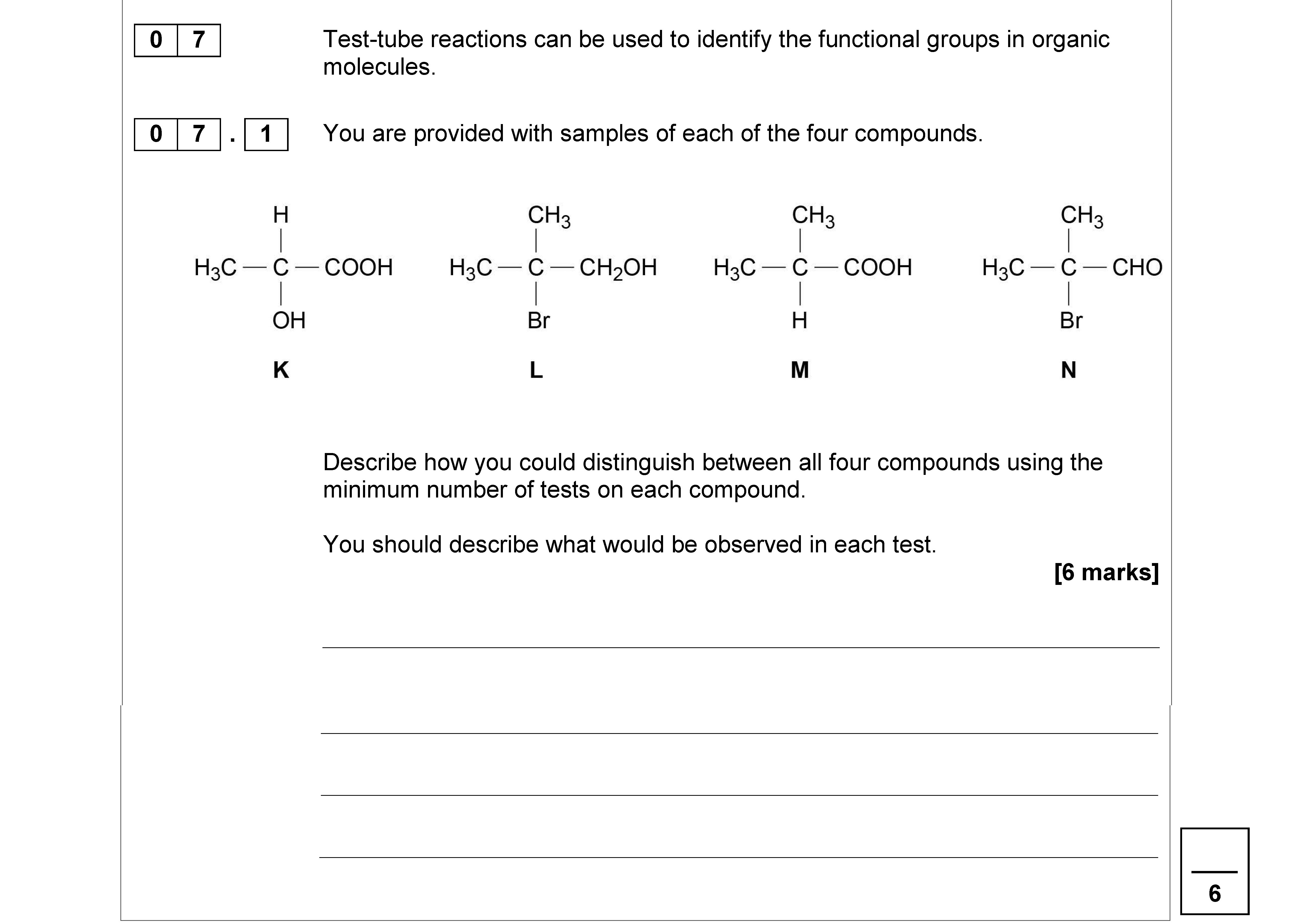Photo AI
You are provided with samples of each of the four compounds - AQA - A-Level Chemistry - Question 7 - 2017 - Paper 2
Question 7

You are provided with samples of each of the four compounds. K: H3C–C(COOH)–C(Br)–C(OH)–H L: H3C–C(COOH)–C(CH3)–C(OH)–H M: H3C–C(COOH)–C(COOH)–C(OH)–H N: H3C... show full transcript
Worked Solution & Example Answer:You are provided with samples of each of the four compounds - AQA - A-Level Chemistry - Question 7 - 2017 - Paper 2
Step 1
Test with NaHCO₃ / pH Indicator
Answer
Perform a test with sodium bicarbonate (NaHCO₃) and a pH indicator.
- Compounds K and M will react and produce effervescence due to the release of carbon dioxide ( CO₂) from the carboxylic acid group (–COOH). This reaction indicates the presence of the carboxylic acid functional group.
- Observe pH changes where K and M may turn the indicator color.
- L and N will show no reaction.
Step 2
Test with Fehling's / Tollens'
Answer
Conduct tests with Fehling's solution or Tollens' reagent.
- Compound N, containing aldehyde groups, will react positively showing a color change (red precipitate in Fehling's).
- K, L and M which have ketone or alcohol groups may show a weak or no reaction.
- The distinct positive reaction indicates the presence of the aldehyde functional group in N.
Step 3
